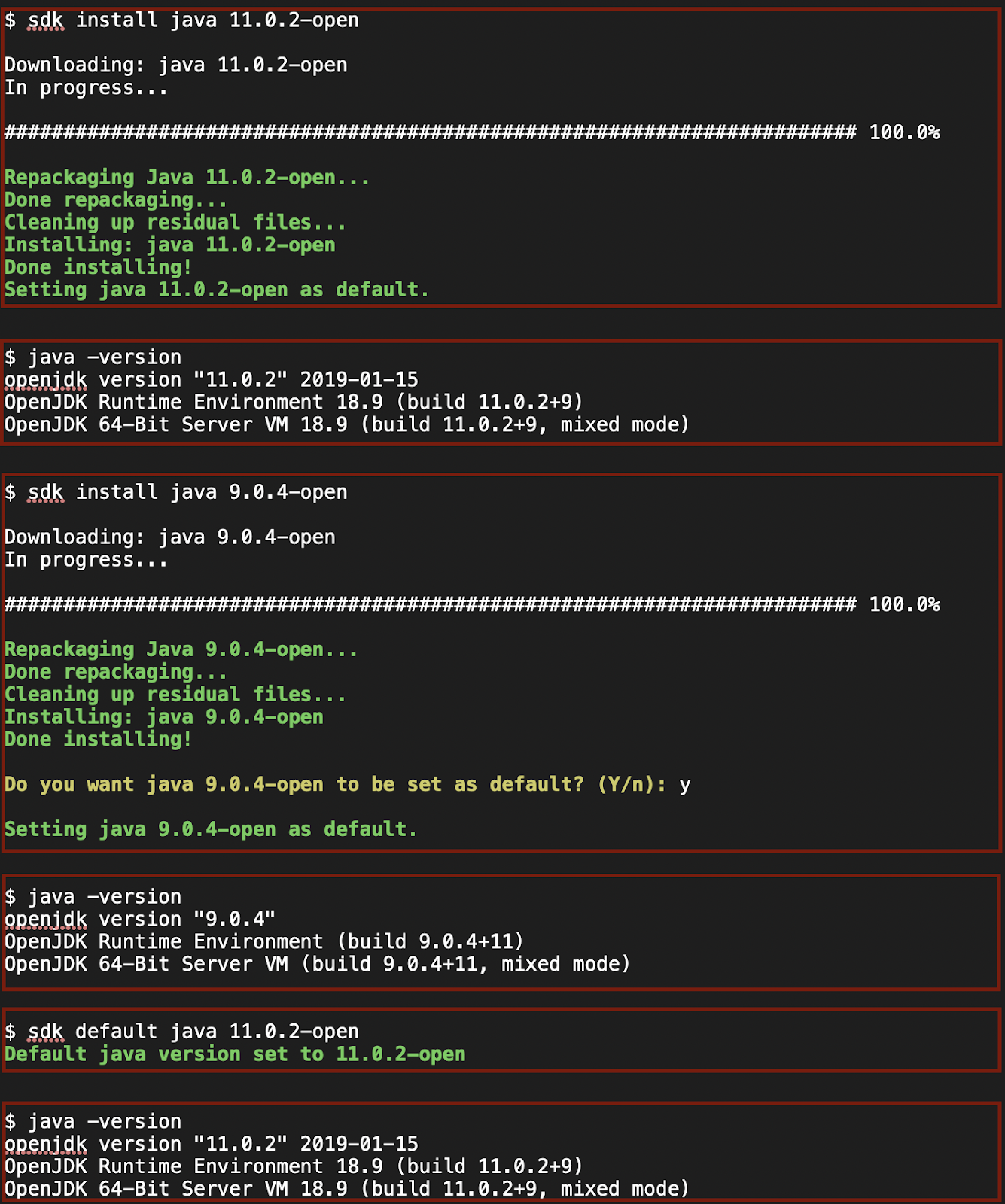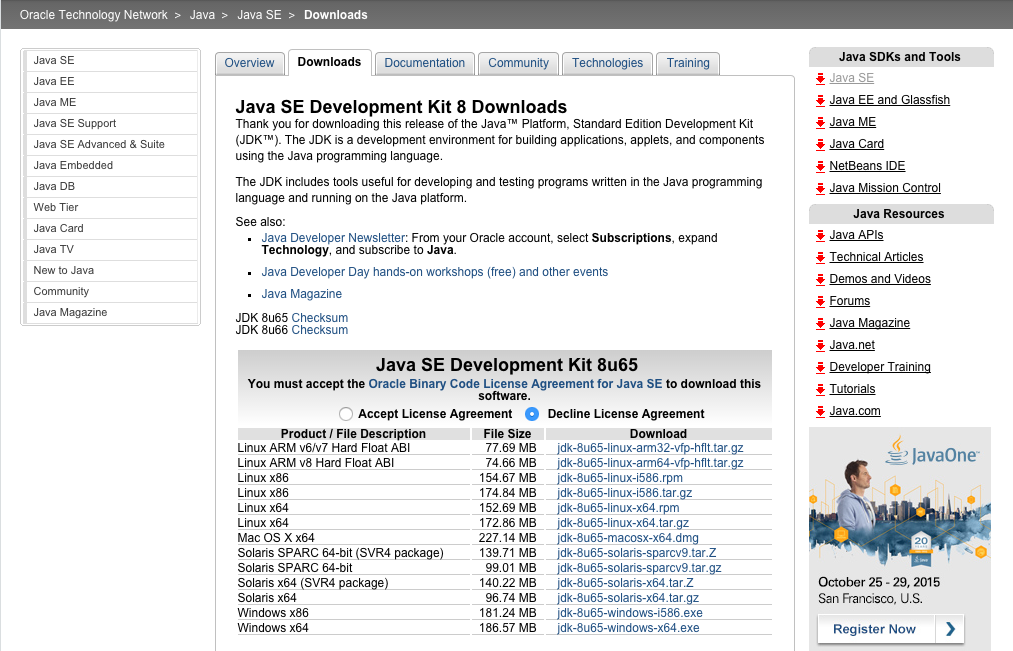

#Recommended java versions for mac os x android#
The License Agreement forms a legally binding contract between you and Google in relation to your use of the SDK.ġ.2 "Android" means the Android software stack for devices, as made available under the Android Open Source Project, which is located at the following URL:, as updated from time to time.ġ.3 A "compatible implementation" means any Android device that (i) complies with the Android Compatibility Definition document, which can be found at the Android compatibility website () and which may be updated from time to time and (ii) successfully passes the Android Compatibility Test Suite (CTS).ġ.4 "Google" means Google LLC, organized under the laws of the State of Delaware, USA, and operating under the laws of the USA with principal place of business at 1600 Amphitheatre Parkway, Mountain View, CA 94043, USA.Ģ.1 In order to use the SDK, you must first agree to the License Agreement. If you always follow this pattern, it should save you from some headaches.This is the Android Software Development Kit License Agreementġ.1 The Android Software Development Kit (referred to in the License Agreement as the "SDK" and specifically including the Android system files, packaged APIs, and Google APIs add-ons) is licensed to you subject to the terms of the License Agreement.

I've often seen weird problems arise on other developers' machines that result from how some old version of Java was installed. The above example could be rewritten using java_home as: export JAVA_HOME=$(/usr/libexec/java_home -v 11) Conclusion This is really helpful if you're setting a project-specific JDK and sharing this configuration with other team members via direnv. The most useful component is that you can provide java_home a less precise version and let it figure out which specific path to use. MacOS also has a utility for finding the location of a JDK. It's really handy that this is set via an environment variable because it allows you to, in tandem with tools like direnv, easily switch between JDK versions depending on the project that you're working on. macOS has built-in wrappers for Java commands that will first check this environment variable before trampolining over to the JDK specified by it. JAVA_HOME="/Library/Java/JavaVirtualMachines/jdk-11.0.7.jdk/Contents/Home"Īnd you're done. Using the example above, it would look like this: export You've got to set the JAVA_HOME environment variable.

The JDK has been extracted to the right place, but it's still not quite ready to use. Library/Java/JavaVirtualMachines/jdk-11.0.7.jdk/Contents/Home 2. If you did this step right, you'll have a folder named "jdk-11.0.7.jdk." There should also be a Contents/Home subfolder of that: Untar the JDK as-is into a subfolder of this.
#Recommended java versions for mac os x install#
On macOS, the correct place to install a JDK is /Library/Java/JavaVirtualMachines. So instead of installing Java any old way, follow these instructions. For example, the version of Gradle used by React Native is incompatible with JDKs newer than 11. Unfortunately, it's pretty common to want to specify a particular Java version for your project. at least until you need to switch which version of Java you're using. If you don't follow it, everything will probably work just fine. There is a correct way to install Java on macOS.


 0 kommentar(er)
0 kommentar(er)
